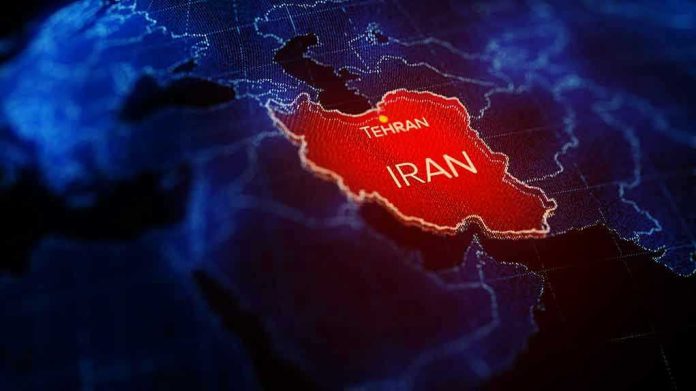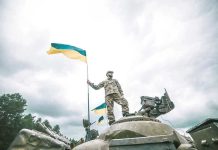
Iran’s president claims he survived an Israeli airstrike that left him injured—so how did the world’s most wanted reformer end up dodging missiles inside Tehran, and what does it really mean for the future of the Middle East?
At a Glance
- Iranian President Masoud Pezeshkian alleges he was injured in a June 16 Israeli airstrike during a high-level meeting in Tehran.
- The reported attack targeted a secure government facility during a 12-day war between Iran and Israel, using multiple bombs or missiles to block escape routes.
- The incident highlights the volatility of the Iran-Israel conflict and questions the safety of Iran’s top leadership—even on home turf.
- No independent international verification yet exists for the details of Pezeshkian’s injury or the airstrike itself.
Iran’s President Caught in the Crosshairs: The Airstrike Heard Round the World
Masoud Pezeshkian, Iran’s new president—touted by some as a moderate reformer, by others as a regime loyalist—now claims he was injured escaping an Israeli airstrike that ripped through a supposedly secure government building in western Tehran on June 16, 2025. According to Iran’s semi-official Fars News Agency, the attack was as precise as it was audacious: six bombs or missiles targeted entry and exit points, intentionally designed to trap the president and his senior officials inside. Power was cut on the targeted floor, forcing a frantic escape through an emergency hatch, leaving Pezeshkian with a minor leg injury.
This strike didn’t just rattle the windows of a government bunker—it sent shockwaves through the entire region, especially as it occurred during a brutal 12-day war between Israel and Iran. The war itself was a powder keg of strikes and counterstrikes, with the United States stepping in to bomb three Iranian nuclear sites on June 22, just days after the alleged attack on Pezeshkian. The conflict ended with a U.S.-brokered cease-fire on June 28, but the uneasy calm that followed has done little to settle fears about escalating covert warfare.
Iranian Leadership’s Vulnerability Exposed
The fact that Israel could allegedly target and injure Iran’s president in the heart of Tehran is not just embarrassing for the regime—it’s a clear message to every would-be tyrant or reformer in the region: no one is safe, not even behind layers of concrete, armed guards, and radio jammers. The attack reportedly trapped Pezeshkian and senior officials, blocking evacuation and sowing chaos. The government’s own narrative, delivered through the IRGC-managed Fars News Agency, frames the president’s survival as a brush with martyrdom and a testament to the regime’s resilience.
But let’s be honest: if the world’s most paranoid state apparatus can’t keep its president out of the line of fire, what hope do ordinary Iranians have? Hardliners in Tehran are already using the incident as a rallying cry for more aggressive tactics against Israel and the West, arguing that such attacks only prove the need for greater militarization, more surveillance, and tighter internal controls. Meanwhile, the reformist camp—assuming it still exists—points to the disaster as evidence that endless escalation only puts everyone at risk, from the top down.
Fog of War, Media Spin, and the Challenge of Truth
The details of the alleged airstrike remain shrouded in the usual fog of war and information control. Iranian state and semi-official media have reported the incident, but not a single independent international news agency has corroborated the story. Israel, true to form, has kept its lips sealed, refusing to comment—though its history of targeting Iranian nuclear and military assets is well-documented. The parallels drawn to Israel’s alleged assassination of Hezbollah’s Nasrallah last year only add to the narrative of a relentless, high-tech campaign against Iran’s leadership and its proxies.
Questions swirl about the reliability of the sources. Fars News Agency serves as a mouthpiece for the IRGC, which has every incentive to frame events in a way that maximizes regime legitimacy, stirs nationalist fervor, and—naturally—justifies more crackdowns. The lack of independent verification raises serious doubts about the sequence of events and the extent of Pezeshkian’s injuries. Is this a case of genuine survival, or a carefully crafted piece of wartime propaganda meant to shore up a deeply divided establishment?
Regional Fallout and the Looming Shadow of Escalation
Whether or not every detail of the Iranian narrative holds, the broader impact is hard to deny. The 12-day conflict, combined with the alleged targeting of Iran’s top leadership, has forced the regime to rethink its security protocols, ramp up military spending, and tighten its grip on the public. The Iranian people, already battered by sanctions and economic mismanagement, face the prospect of even deeper isolation and unrest. Meanwhile, energy markets quake at the mere suggestion of war in the world’s most volatile oil-producing region, and Western diplomats scramble to salvage what’s left of the Iran nuclear deal.
For President Pezeshkian, the incident marks a turning point. Hardliners are sharpening their knives, claiming that his reformist overtures make Iran a target. Reformists, if they have a voice left, are warning that the regime’s addiction to conflict will only bring more pain to ordinary Iranians. And as Israel and Iran continue their shadow war, the rest of the world is left holding its breath, wondering which bunker, airbase, or “secure” facility gets hit next.







